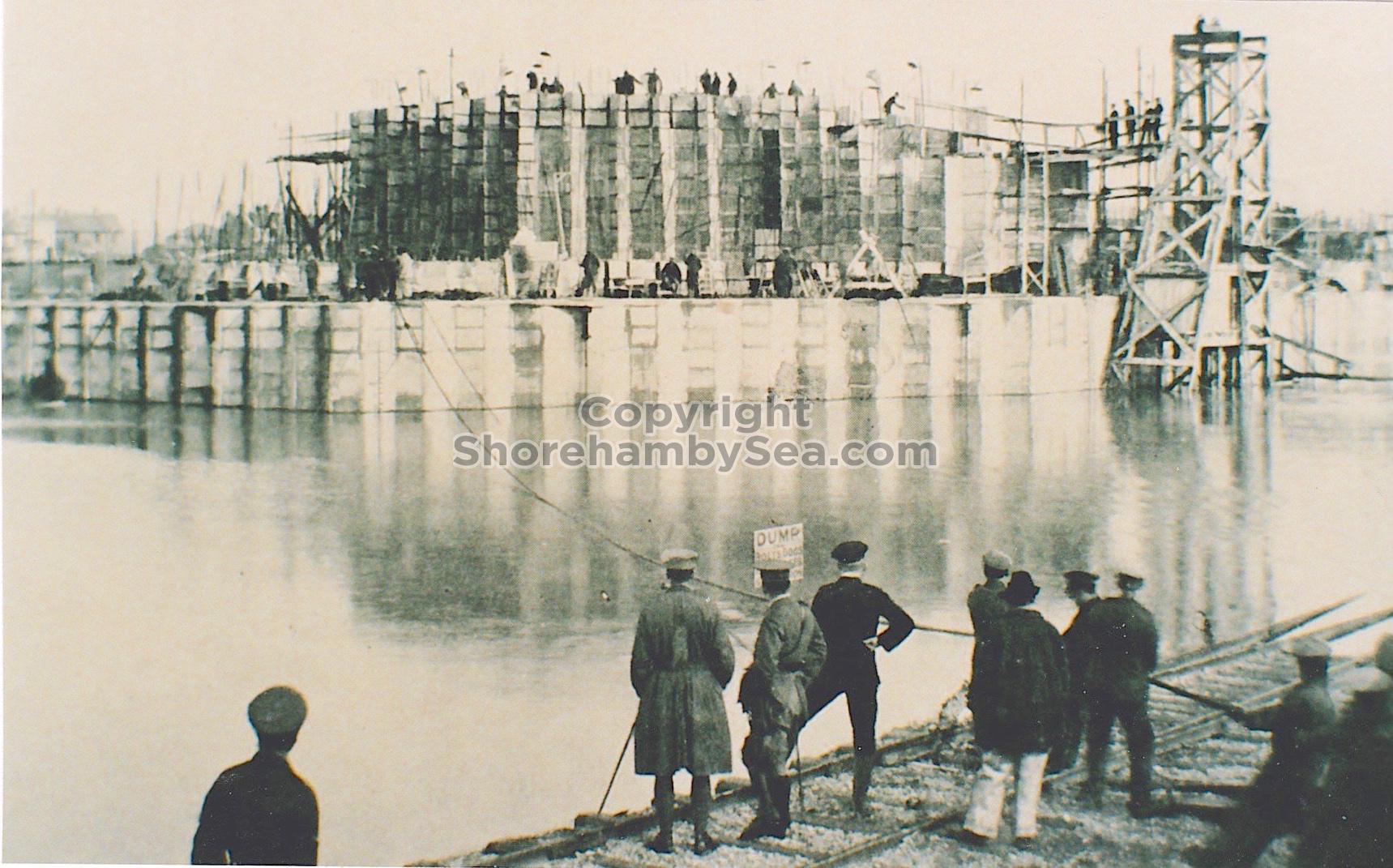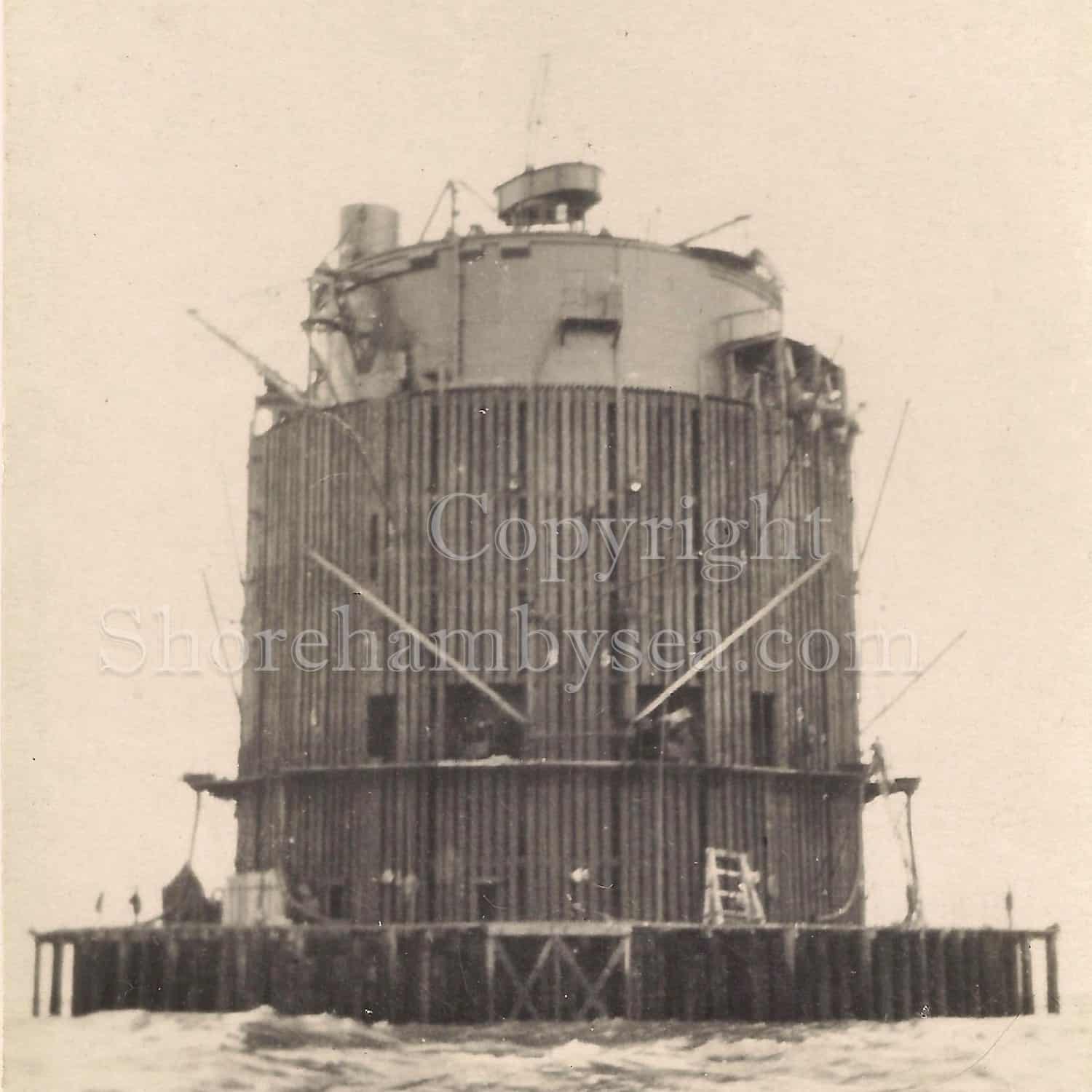During the First World War, the British Admiralty designed eight towers codenamed M-N that were to be built and positioned in the Straits of Dover to protect allied merchant shipping from German U-boats. Designed by civilian Guy Maunsell, the towers were to be linked together with steel nets and armed with two 4-inch guns with the idea of closing the English Channel to enemy ships.
However, by the end of the war in 1918 only one such tower had been completed, at the then-cost of one million pounds, and was located in Shoreham Harbour, awaiting deployment. While another part-built tower would eventually be dismantled in 1924, there remained the completed 92-foot-tall metal cylinder sitting on a raft of concrete.
In 1920 the completed tower was towed by two paddle-wheel tugs to the Nab rock, a rock in the deep-water approach to the eastern Solent and previously marked by a lightship. Buoyancy was provided by the honeycomb construction of the concrete base, creating 18 watertight compartments. When these were flooded, the structure sank and settled to rest at an angle of 3 degrees from vertical towards the northeast – a characteristic tilt which is obvious to this day.



